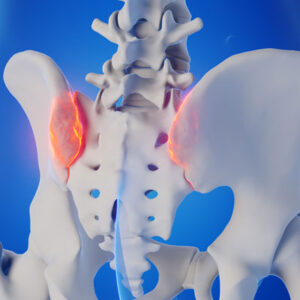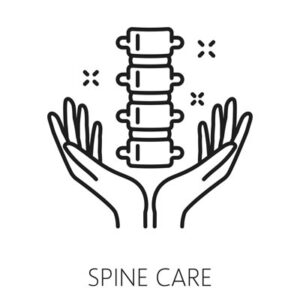As a Chiropractor in London, I always emphasize the importance of daily habits for maintaining spinal health and wellness at home. Simple actions like practicing good posture, incorporating regular stretching, and staying active can make a significant difference in preventing back pain and enhancing overall spinal function.
Additionally, using proper lifting techniques and ensuring your workspace is ergonomically sound are crucial steps. By integrating these tips into your routine, you can protect your spine, reduce discomfort, and promote long-term health, all from the comfort of your home.
Rest Your Spine While Sleeping
Let’s face it, we spend about a third of our lives sleeping. So, why not make sure we’re doing it right for our spines? Proper sleep posture is like a lullaby for your back – it can make all the difference between waking up feeling like a spring chicken or a creaky old door.
The Goldilocks Zone of Mattresses and Pillows
When it comes to mattresses, you want something that’s not too hard, not too soft, but just right. A medium-firm mattress often hits the sweet spot for most people. As for pillows, think of them as your spine’s trusty sidekick. They should support the natural curve of your neck, whether you’re a side sleeper or a back snoozer.
Tips for side sleepers:
- Place a pillow between your knees to keep your spine aligned.
- Ensure your pillow keeps your head level with your spine.
Tips for back sleepers:
- Pop a small pillow under your knees to maintain the natural curve of your lower back.
- Use a contour pillow to support your neck’s curve.
Remember, your bed should be a haven for your spine, not a torture chamber. So, invest in good quality sleep gear – your back will thank you!
Strengthen Core Muscles
Think of your core muscles as your spine’s personal bodyguards. They’re always on duty, protecting and supporting your back. A strong core is like a corset for your spine, but way more comfortable and much less restrictive.
The Core Four: Exercises for a Strong Back
- Planks: The classic “hover” that works wonders.
- Bridges: Great for targeting those lower back muscles.
- Bird-Dog: Sounds funny, works seriously well.
- Dead Bug: Don’t let the name scare you, it’s a killer core workout!
Case Study: Meet Lucas, a 45-year-old office worker who used to groan every time he got up from his chair. After incorporating these core exercises into his daily routine for just 15 minutes a day, Lucas now springs up like a jack-in-the-box. His back pain has decreased significantly, and he’s even added an inch to his height by improving his posture!
See more: The Benefits of Chiropractic Care for Everyday Wellness
Supportive Footwear: Your Spine’s Foundation
Ever heard the phrase “it’s all about that base”? Well, when it comes to spinal health, it’s all about that shoe base. Your feet are the foundation of your body, and what you put on them can have a ripple effect all the way up to your spine.
The Cinderella Effect: Finding Your Perfect Fit
When shopping for shoes, channel your inner Prince Charming and look for these features:
- Good arch support: Like a bridge for your foot.
- Shock absorption: To cushion the impact of each step.
- Wide toe box: Give those piggies room to wiggle!
- Low, stable heel: High heels might look fabulous, but your spine begs to differ.
Remember, if the shoe fits… your spine will benefit!
The Magic Touch: Benefits of Massage
Who doesn’t love a good massage? Well, your spine is a big fan too! Massage therapy isn’t just a luxury; it’s a powerful tool for maintaining spinal health and relieving back pain.
Types of Massages That Hit the Spot
- Swedish Massage: The classic relaxation technique.
- Deep Tissue Massage: For those stubborn knots.
- Trigger Point Therapy: Targets specific areas of tension.
- Myofascial Release: Works on the connective tissue around muscles.
Testimonial: Sandra, a 35-year-old yoga instructor, swears by her bi-weekly massage sessions. “Even though I’m flexible, I still get back pain from demonstrating poses all day. Regular massages have been a game-changer. My back feels looser, my posture has improved, and I sleep better too!”
Ergonomics and Sitting Posture: The Office Warrior’s Guide
In today’s world, many of us are desk jockeys, battling the daily grind from our office chairs. But fear not! With the right ergonomic setup and posture, you can turn your workspace into a spine-friendly zone.
The Ergonomic Checklist
- Chair: Adjustable height, lumbar support, and armrests.
- Desk: At elbow height when sitting.
- Monitor: At eye level, an arm’s length away.
- Keyboard and Mouse: Close enough to avoid reaching.
Sitting Pretty: Tips for Proper Posture
- Keep your feet flat on the floor.
- Maintain a 90-degree angle at your knees and hips.
- Sit back in your chair, using the lumbar support.
- Keep your shoulders relaxed, not hunched.
- Take regular breaks to stand and stretch.
Remember, the best posture is your next posture. Keep moving!
Move It or Lose It: Regular Exercise and Stretching
Your spine loves to move! Regular exercise and stretching are like a spa day for your back. They improve flexibility, strengthen supporting muscles, and increase blood flow to the spine.
Spine-Friendly Exercises
- Walking: Simple, effective, and free!
- Swimming: Great low-impact workout.
- Yoga: Improves flexibility and core strength.
- Pilates: Focuses on core and postural muscles.
Daily Stretching Routine Tutorial
Here’s a quick 5-minute routine to keep your spine happy:
- Cat-Cow Stretch (30 seconds): On hands and knees, alternate between arcing and rounding your back.
- Child’s Pose (30 seconds): Sit back on your heels, stretching your arms forward.
- Seated Spinal Twist (30 seconds each side): Sit cross-legged, place one hand behind you, and twist gently.
- Standing Forward Bend (30 seconds): Bend forward from the hips, letting your head hang.
- Chest Opener (30 seconds): Clasp hands behind your back and lift.
Remember, gentle is the name of the game. No need to turn into a pretzel!
You Are What You Eat: Healthy Diet and Hydration
Your spine isn’t just what you do; it’s also what you eat and drink. A healthy diet and proper hydration are crucial for maintaining spinal health.
Spine-Friendly Foods
- Calcium-rich foods: For strong bones (e.g., dairy, leafy greens).
- Omega-3 fatty acids: For reducing inflammation (e.g., fish, walnuts).
- Vitamin D: For calcium absorption (e.g., egg yolks, fortified foods).
- Lean proteins: For muscle repair and growth.
Water: The Elixir of Spinal Life
Stay hydrated! Water helps maintain the height of intervertebral discs, keeping your spine cushioned and happy. Aim for at least 8 glasses a day. Your spine will drink it up!
Stand Up for Your Spine: Avoid Prolonged Sitting
Sitting is the new smoking, or so they say. Prolonged sitting can be a real pain in the… back. But fear not, we’ve got some tips to keep you moving.
Break the Sitting Cycle
- Set a timer to stand up every 30 minutes.
- Use a standing desk for part of your day.
- Take walking meetings or phone calls.
- Do some desk stretches (your colleagues might think you’re weird, but your spine will love you).
Case Study: Meet Sharon, a programmer who used to sit for 10+ hours a day. She started using a sit-stand desk and taking regular movement breaks. After three months, her chronic lower back pain had significantly decreased, and she even lost a few pounds as a bonus!
Spinal Health Exercises: Your Back’s Best Friends
These exercises are specifically designed to target your spine and the muscles that support it. Think of them as a spa day for your back!
- Pelvic Tilts: Lie on your back, knees bent. Tilt your pelvis to flatten your lower back against the floor, then release. Repeat 10 times.
- Supermans: Lie face down, arms extended. Lift your arms, legs, and chest off the ground simultaneously. Hold for 5 seconds. Repeat 10 times.
- Thoracic Rotation: On your side, knees bent. Extend the top arm, then rotate your upper body to open your chest. Return to start. Do 10 on each side.
Success Story: Lucas, a 50-year-old construction worker, started doing these exercises daily. After just a month, he noticed increased flexibility and decreased back pain on the job. “I feel like I’ve turned back the clock on my spine!” he says.
Lift with Your Legs, Not Your Ego: Correct Lifting Techniques
We’ve all heard it before, but it bears repeating: lift with your legs, not your back! Proper lifting technique can save you from a world of hurt.
The Art of the Safe Lift
- Stand close to the object you’re lifting.
- Squat down, bending at the knees and hips.
- Keep your back straight and core engaged.
- Lift with your legs, keeping the object close to your body.
- Avoid twisting while lifting. Turn with your feet, not your waist.
Remember, if it’s too heavy, don’t be a hero. Ask for help or use equipment. Your spine will thank you!
Breathe Easy: Stress Management for Spinal Health
Stress isn’t just in your head; it can manifest physically, often in the form of muscle tension and back pain. Learning to manage stress can do wonders for your spinal health.
Stress-Busting Techniques
- Meditation: Even 5 minutes a day can make a difference.
- Deep breathing exercises: Try the 4-7-8 technique (inhale for 4, hold for 7, exhale for 8).
- Yoga: Combines physical activity with mindfulness.
- Progressive muscle relaxation: Tense and relax each muscle group in turn.
Personal Story: Ashley, a high-stress executive, started practicing mindfulness meditation for 10 minutes each morning. After a few weeks, she noticed her chronic neck tension had eased, and she was sleeping better. “I never realized how much my stress was affecting my body until I learned to manage it,” she says.
Regular Check-ups: Your Spine’s Tune-Up
Just like your car needs regular servicing, your spine benefits from periodic check-ups. Regular visits to a chiropractor or physiotherapist can help catch and address issues before they become major problems.
What to Expect at a Spinal Check-up
- Health history review: Discussing any pain or symptoms you’re experiencing.
- Physical examination: Checking your posture, range of motion, and spine alignment.
- Specific tests: May include x-rays or other imaging if necessary.
- Treatment plan: Tailored to your specific needs and goals.
When choosing a practitioner, look for someone who listens to your concerns, explains things clearly, and makes you feel comfortable. Your spine deserves the best care!
Remember, taking care of your spine is a lifelong journey, not a destination. By incorporating these tips into your daily routine, you’re investing in a healthier, happier future for your back.
At SpineWorks Chiropractic, we’re committed to helping you achieve optimal spinal health. Whether you’re dealing with chronic back pain or simply want to maintain a healthy spine, our team of experienced professionals is here to guide you every step of the way. Don’t wait for pain to strike – schedule your spinal health check-up today and start your journey to a healthier spine!





